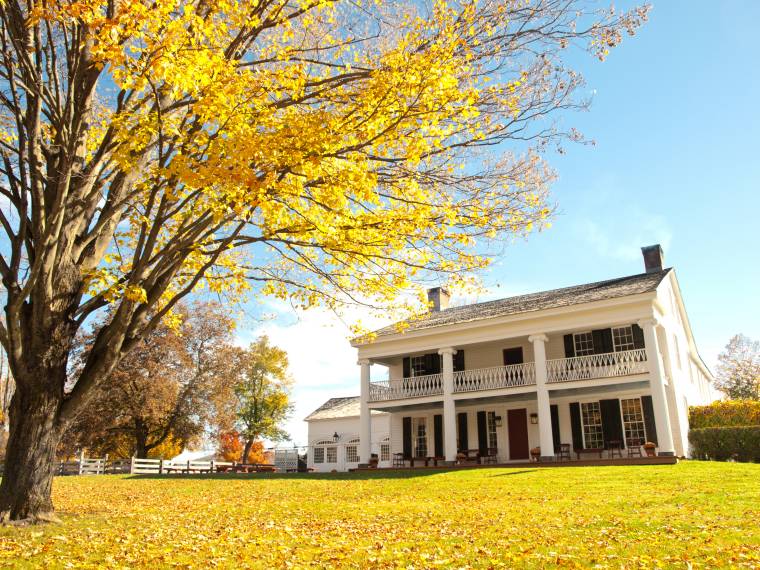 Painting During the Fall and Winter Seasons
Painting During the Fall and Winter Seasons
The fall and winter seasons are associated with many activities, the least common being painting. Experts in this line of work could, however, surprise you with the success stories of interior painting during these two seasons as unlikely as it may seem. This article will give you a brief description of why this is so as well as give you an insight of the challenges that could pose a problem in winter and fall painting. Pretty sure with these few details in mind, choosing when to do an interior paint job with high chances of good results won’t prove to be much of a problem. Winter and fall painting will work!
Challenges of Painting During Winter and Fall
Before starting with the benefits, it’s a good idea to know what issues you expect when painting during these times of the year.
The first is the obvious reason; both winter and fall are cold seasons. Paint doesn’t dry fast enough in low temperatures. When it eventually dries, the end result will be less attractive compared to what was initially expected.
Moreover, to hasten up the drying pace during winter and fall painting, a warm temperature could be maintained inside the painted room. However, you need to open the windows to let the fumes out. Both actions are terrible energy saving techniques, especially during these two seasons.
Benefits of Winter and Fall Painting
First things first, there won’t be much to do outside during winter or fall as opposed to Summer and Spring. Interior painting is not only a good, well planned out idea of an indoor activity during such seasons but will also give the best result if the timing is done right as is explained below.
Cooler temperatures are ideal for drying if the painting is done before the temperature drops too much. Probably in the early or late phases of these seasons, in my opinion. In summer or autumn, the hot temperature will dry up the paint too quickly resulting in the inadequately adhered paint to the surface. It will be no surprise if peeling will be observed in the future in such a painted space.
The summer and autumn seasons are pretty humid compared to winter and fall. As a painter, go for the times when there is the least humidity to do your painting and consequential drying. Moisture gets into paint when drying, thus increasing the likelihood of paint cracking and peeling off from the painted surface. To lower the chances of cracking and peeling off, the safest bet is painting during winter and fall.

2mouthful
2 years ago3mislaid
gay video chat sites realty to dirtyrouletty
2 years agogay mature men chat group https://bjsgaychatroom.info/
gay dating app for over 50
2 years agoindianapolis gay dating https://gaypridee.com/
chat with a gay stranger
2 years agochat avenue gay chat https://gaytgpost.com/
gay phone chat line numbers
2 years agogay danish english chat rooms https://gay-buddies.com/
scruff gay dating app
2 years agointernational gay dating websites https://speedgaydate.com/
fortnite weapon slots
2 years agoplay sizzling 7 slots free https://2-free-slots.com/
fa fa fa slots
2 years agotriple seven slots https://freeonlneslotmachine.com/
slots games free
2 years agoslots online free https://candylandslotmachine.com/
free hot slots
2 years agoheart of vegas slots https://pennyslotmachines.org/
free coins hot shot slots
2 years agobig fish free slots games https://slotmachinesworld.com/
gsn casino free slots
2 years agofree slots games https://slotmachinesforum.net/
highest paying slots
2 years agofree slots for pc https://slot-machine-sale.com/
golden casino free slots
2 years agoquick hits free slots https://beat-slot-machines.com/
card game slots
2 years agofree slots triple diamond https://download-slot-machines.com/
hot shot slots
2 years agofree x rated slots https://411slotmachine.com/
tiki torch slots free
2 years agogsn casino slots free https://www-slotmachines.com/
all slots casino
2 years agoaristocrat slots free play https://slotmachinegameinfo.com/
custom dissertation writing help
2 years agodissertation writing service in uk https://buydissertationhelp.com/
dissertation crossword clue
2 years agodissertation help service quality https://dissertationwriting-service.com/
business dissertation help
2 years agohelp writing a dissertation https://help-with-dissertations.com/
law dissertation writing help
2 years agohelp writing dissertation https://mydissertationwritinghelp.com/
dissertation writing courses
2 years agodissertation proposal help https://dissertations-writing.org/
help with mba dissertation
2 years agodissertation proposal template https://helpon-doctoral-dissertations.net/